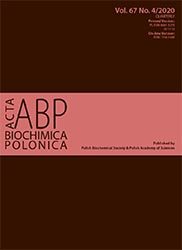Interaction network of proteins associated with unfavorable prognosis in acute myeloid leukemia
Abstract
Acute myeloid leukemia (AML) is a malignant disorder of hematopoietic stem and progenitor cells, characterized by accumulation of immature blasts in the bone marrow and peripheral blood of affected patients. Standard induction therapy leads to complete remission in approximately 50% to 75% of patients. In spite of favorable primary response rates, only 20% to 30% of patients enjoy long-term disease free survival. Identifying proteins involved in prognosis is important for proposing biomarkers that can aid in the clinical management of the disease. The aim of this study was to construct a protein-protein interaction (PPI) network based on serum proteins associated with unfavorable prognosis of AML, and analyze the biological pathways underlying molecular complexes in the network. We identified 16 candidate serum proteins associated with unfavorable prognosis (in terms of poor response to treatment, poor overall survival, short complete remission, and relapse) in AML via a search in the literature: IL2RA, FTL, HSP90AA1, D2HGDH, PLAU, COL18A1, FGF19, SPP1, FGA, PF4, NME1, TNF, ANGPT2, B2M, CD274, LGALS3. The PPI network was constructed with Cytoscape using association networks from String and BioGRID, and Gene Ontology enrichment analysis using the ClueGo pluggin was performed. The central protein in the network was found to be PTPN11 which is involved in modulating the RAS-ERK, PI3K-AKT and JAK-STAT pathways, as well as in hematopoiesis, and in the regulation of apoptotic genes. Therefore, a dysregulation of this protein and/or of the proteins connected to it in the network leads to the defective activation of these signaling pathways and to a reduction in apoptosis. Together, this could cause an increase in the frequency of leukemic cells and a resistance to apoptosis in response to treatment.
Acta Biochimica Polonica is an OpenAccess quarterly and publishes four issues a year. All contents are distributed under the Creative Commons Attribution-ShareAlike 4.0 International (CC BY 4.0) license. Everybody may use the content following terms: Attribution — You must give appropriate credit, provide a link to the license, and indicate if changes were made. You may do so in any reasonable manner, but not in any way that suggests the licensor endorses you or your use.
Copyright for all published papers © stays with the authors.
Copyright for the journal: © Polish Biochemical Society.


